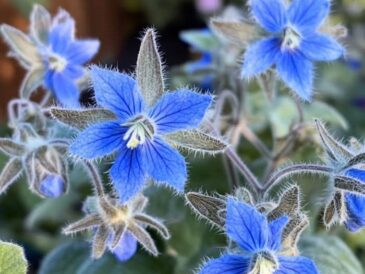You’ve probably seen it growing between blades of grass, in fields, or even poking through sidewalk cracks. But did you know that white clover—that humble little plant with three-part leaves—is one of nature’s most underrated treasures?
More than just a common lawn filler, white clover (Trifolium repens) is packed with nutrients, healing properties, and environmental benefits. Herbalists, foragers, and regenerative gardeners have long valued this little plant for everything from teas and salves to soil health and pollinator support.
If you’re curious about this tiny powerhouse, here’s your complete guide to identifying, using, and benefiting from white clover in your home, garden, and wellness routine.
🌱 What Is White Clover?
White clover is a low-growing, perennial herb from the legume family (Fabaceae). Though native to Europe and Central Asia, it now thrives around the world—especially in North America.
🔍 How to Identify It:
- Leaves: Trifoliate (three-part) leaves with oval leaflets; often marked by a pale “V” shape.
- Flowers: Small white (sometimes pink-tinged) round flower heads made up of tiny florets.
- Growth Habit: Creeps along the ground via stolons, forming thick mats.
- Height: Typically 4–10 inches tall.
- Bloom Time: Late spring through early fall.
👉 Not to be confused with red clover, which grows taller and has purple-pink flowers.
🌿 Nutritional & Medicinal Benefits of White Clover
This unassuming plant is both edible and medicinal, offering a surprising range of health benefits.
🔬 What’s Inside:
- Rich in vitamin C, vitamin A, and trace minerals
- Contains flavonoids, coumarins, and isoflavones
- High in plant-based protein
- Naturally alkaline – helps balance body pH
Medicinal Properties:
- Detoxifying (supports liver and lymphatic system)
- Anti-inflammatory
- Expectorant (helps with mucus and coughs)
- Diuretic
- Mild sedative (calming effect)
✅ 10 Incredible Benefits of White Clover
- Natural Detox Aid
Supports liver function and lymphatic drainage when consumed as a tea. - Respiratory Relief
Acts as an expectorant to ease coughs and minor respiratory issues. - Skin Healing
Used topically in salves or poultices for:- Minor cuts
- Rashes
- Bug bites
- Burns
- Soothes Digestion
White clover tea can ease indigestion, gas, and bloating. - Antioxidant Support
Flavonoids protect against oxidative stress and boost general wellness. - Improves Soil Health
As a nitrogen fixer, it enriches soil by converting atmospheric nitrogen into a usable form for nearby plants. - Pollinator Favorite
Attracts bees and butterflies—essential for healthy ecosystems. - Lawn Alternative
- Prevents erosion
- Suppresses weeds
- Requires less mowing
- Remains green even in drought
- Culinary Edible
Leaves and flowers can be:- Tossed in salads
- Added to smoothies
- Steeped into teas
- Dried and stored for later use
- Immune Support
Vitamin C and isoflavones help strengthen your natural defenses.
🍵 DIY Uses: How to Use White Clover at Home
Next page





